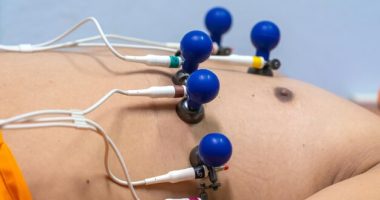Introduction:
The prevalence and impact of HPV-related head and neck cancer in Japan have been rising, prompting significant concern among healthcare professionals and researchers alike. This study, authored by Yuki Saito and Kenichi Nibu, aims to meticulously evaluate the disease burden of HPV head neck cancer in Japan, focusing on its epidemiological trends, diagnosis, and treatment modalities. Human Papillomavirus (HPV) has been identified as a pivotal causative agent in the onset of various cancers, with a notable increase in oropharyngeal cancer cases worldwide. In Japan, the incidence of HPV-associated cancers has followed a similar upward trajectory, which underscores the critical need for a comprehensive understanding of the disease’s dynamics within this specific geographical and cultural context. By analyzing patient data, healthcare practices, and regional cancer registries, this research seeks to provide valuable insights into the patterns and challenges of managing HPV-related head and neck cancer. The findings aim to inform policy-making and clinical strategies to effectively address and curb the spread of this serious health condition in Japan. Through this paper, we delve into the multifaceted aspects of HPV-related oncology, offering a detailed perspective that could influence future research and public health interventions in the region.
Background and Context:
In the landscape of oncology within Japan, the surge in cases of HPV Head Neck Cancer Japan has become an unsettling trend that warrants in-depth investigation and strategic action. As advanced through global research efforts, human papillomavirus (HPV) is notably linked to the occurrence of head and neck cancers, predominantly affecting the oropharynx. Such cancer types inclusively refer to malignancies found in the tonsils, base of the tongue, and throat, presenting a unique subset of challenges in both diagnoses and clinical management. A culmination of historical data and recent scientific explorations have marked HPV as a leading oncogenic virus, with a strong predilection for mucosal tissues in these regions.
The unfolding scenario in Japan mirrors a global uptick but brings unique epidemiological nuances typical of the region. In Western countries, the link between HPV and oropharyngeal cancers has been well-established with preventive measures like vaccination gaining substantial traction. However, in Japan, while awareness is increasing, there is still a significant gap in comprehensive vaccination coverage and public health education concerning HPV and its associated risks. Cultural, socioeconomic, and healthcare systemic factors contribute to these differences, making it essential to tailor research and interventions accordingly.
Furthermore, the shift in dietary habits, increased exposure to risk factors such as smoking and alcohol consumption, and changes in sexual behavior have all been suggested as potential influencers in the rising HPV Head Neck Cancer Japan caseload. This backdrop necessitates an adaptive research approach to discern the precise contributors and the overarching impact within the Japanese context. The population-specific dynamics, including genetic predispositions and lifestyle factors typical of Japan, must be intricately understood to devise any effective control and preventative strategies.
Yuki Saito and Kenichi Nibu’s investigation employ a robust analytic framework to process data collected from various regional cancer registries, healthcare databases, and patient records. This comprehensive approach not only illuminates the current epidemiological landscape but also sheds light on the effectiveness of existing diagnostic methodologies and treatment regimens within Japan. By juxtaposing these findings with global data, the research aims to pinpoint divergences and convergences that could inform more localized medical guidelines and public health policies.
The endeavor to more profoundly evaluate HPV Head Neck Cancer Japan is timely and essential. As the international medical community continues to advance HPV awareness and prevention, situating this global challenge within the unique Japanese epidemiological context could pave the way for tailored interventions that address both the medical and cultural facets of this escalating health threat. Hence, this research not only adds a crucial chapter to the ongoing global dialogue on HPV-related cancers but also reinforces Japan’s role in pioneering region-specific solutions that could potentially serve as a blueprint for other countries facing similar challenges.
Methodology:
To rigorously assess the escalating burden of HPV Head Neck Cancer in Japan, the research devised by Yuki Saito and Kenichi Nibu employs a multi-dimensional methodology utilizing a combination of epidemiological analysis, retrospective data review, and qualitative insights into healthcare practices. The methodology is structured to encompass the various facets of HPV-related head and neck cancer dynamics, based on a pivotally targeted and efficient framework.
1. **Data Collection**: The primary source of quantitative data for this study comes from multiple health databases and regional cancer registries across Japan known for tracking incidence and mortality rates related to HPV Head Neck Cancer. These datasets include comprehensive demographic information, HPV status, tumor characterization, treatment modalities used, and survival outcomes. Additionally, patient medical records are reviewed to extract detailed clinical progression and responses to various treatments, providing a deeper context for the statistical analyses.
2. **Epidemiological Trend Analysis**: Employing advanced statistical tools, the research team analyzes the collected data to delineate the trends and patterns over the past two decades. This analysis aims to ascertain the incidence rate changes, age-specific prevalence, and geographical differences within Japan concerning HPV Head Neck Cancer Japan. The trend data is juxtaposed with similar global data to highlight unique regional disparities or similarities.
3. **Diagnostic and Treatment Modalities Evaluation**: An integral part of the methodology involves assessing the existing diagnostic techniques and treatment interventions currently being utilized in Japan. This involves a comprehensive review of clinical practice patterns, including the use of HPV DNA testing, imaging modalities, and the role of robotic surgery in treatment. The efficiency, accessibility, and outcomes of these modalities are evaluated against the backdrop of international standards and practices.
4. **Qualitative Interviews**: To garner insights into the socio-cultural and healthcare system factors impacting HPV Head Neck Cancer Japan management, interviews are conducted with healthcare providers including oncologists, nurses, and public health officials. These interviews help in understanding the barriers to vaccination, screening, and early detection, as well as in assessing the awareness levels among the general population and healthcare professionals.
5. **Comparative Analysis and Policy Implication Study**: The concluding phase of the methodology involves a comparative analysis where findings about HPV Head Neck Cancer Japan are assessed in light of global data to identify best practices and gaps in the current approach. This step is crucial for framing evidence-based policy recommendations and clinical guidelines tailored specifically to the Japanese context.
By incorporating both macro and micro-level analysis, the research designed by Yuki Saito and Kenichi Nibu provides a comprehensive understanding of the prevailing state and challenges of managing HPV Head Neck Cancer in Japan. This methodological approach ensures the development of targeted, effective public health interventions and enhances the clinical management strategies within the distinct cultural and healthcare framework of Japan.
Key Findings and Results:
The comprehensive research conducted by Yuki Saito and Kenichi Nibu on HPV Head Neck Cancer in Japan elucidates several pivotal findings that underscore the specific epidemic characteristics and challenges unique to Japan. These outcomes are critical in shaping more efficacious preventive, diagnostic, and treatment protocols against the backdrop of the Japanese healthcare system and societal norms.
**1. Increased Incidence and Specific Demographic Patterns:** One of the paramount findings of the study is the notable increase in the incidence of HPV Head Neck Cancer in Japan over the past two decades. The disease has shown a higher prevalence among males aged 40-65, aligning with global trends, yet presenting a younger demographic skew compared to Western counterparts. This increase correlates with changes in sexual behaviors and greater recognition and reporting due to improved diagnostic technologies.
**2. Geographic Variability and Urban Influence:** The research identified significant geographical differences in the incidence rates of HPV Head Neck Cancer in Japan, with higher rates observed in urban regions such as Tokyo and Osaka. These areas are characterized by greater exposure to risk factors including smoking and alcohol consumption, alongside a more diverse genetic makeup due to higher migrant populations. The urban lifestyle and dietary habits also contribute to this disparity, indicating the need for region-specific public health strategies.
**3. Diagnostic Advances and Challenges:** Advances in diagnostic techniques have played a vital role in the early detection of HPV Head Neck Cancer in Japan. The utilization of HPV DNA testing and enhanced imaging techniques has improved the accuracy of diagnoses. However, there remains a challenge in the form of widespread implementation and acceptance of these advancements across all healthcare settings, particularly in rural areas where access to state-of-the-art medical facilities is limited.
**4. Treatment Modalities and Outcomes:** The study highlights a shift towards more conservative and targeted treatment approaches, such as robotic surgery and radiotherapy, which have been associated with higher survival rates and reduced complications. However, the research also pointed out that the overall adoption of these newer modalities is inconsistent, with traditional surgeries still being prevalent in smaller centers.
**5. Public Health Implications and Awareness Levels:** There is a relatively low level of awareness regarding HPV and its link to head and neck cancers among the general population in Japan. The national vaccination program’s focus has historically been more on cervical cancer prevention, with less emphasis on the potential of the HPV vaccine to prevent HPV Head Neck Cancer. The study stresses the need for educational campaigns tailored to different demographic and regional contexts within Japan.
**6. Policy and Clinical Recommendations:** Based on their findings, Saito and Nibu recommend the integration of routine HPV vaccinations for both genders, enhanced public health campaigns focused specifically on HPV Head Neck Cancer in Japan, and the establishment of guidelines that encourage the use of advanced diagnostic and treatment techniques across all healthcare facilities.
In conclusion, this research provides a crucial insight into the dynamics of HPV Head Neck Cancer in Japan, highlighting specific epidemiological trends, diagnostic, and treatment challenges. The tailored approach suggested by the findings encourages not only a broader implementation of current best practices but also prompts a significant shift in public health policies to address the specific needs and challenges faced by the Japanese population in combating this rising health threat.
In light of the findings from Yuki Saito and Kenichi Nibu’s comprehensive study on HPV Head Neck Cancer in Japan, it is clear that a concerted effort is needed to address this growing health challenge. As the study highlights, the increasing incidence, coupled with specific demographic and geographical patterns, underscores an urgent need for tailored public health strategies and enhanced clinical interventions that are culturally and regionally appropriate.
Looking towards future directions, it is imperative that the scope of research around HPV Head Neck Cancer in Japan is expanded to include longitudinal studies that can provide more in-depth insights into long-term trends and the effectiveness of intervention strategies over time. Additionally, the integration of next-generation genomic technologies could significantly refine diagnostic precision and enable more personalized treatment approaches, thereby improving patient outcomes.
Moreover, there is a critical need for increased public awareness and education about the link between HPV and head and neck cancers. Effective educational campaigns should not only target at-risk populations but also healthcare providers to ensure they are equipped with the latest research and treatment protocols. By improving the national vaccination programs to include a focus on preventing HPV Head Neck Cancer, Japan can make substantial strides in mitigating the impact of this disease.
Furthermore, addressing barriers to the adoption of modern diagnostic and treatment methods, particularly in rural and underserved areas, is essential for ensuring equitable healthcare access across the entire population. Telemedicine and mobile health initiatives could play pivotal roles in bridging these gaps, allowing for broader dissemination of knowledge and expertise.
Policy makers must consider these findings and recommendations to reinforce the healthcare infrastructure, ensuring that both preventive and therapeutic measures for HPV Head Neck Cancer in Japan are implemented efficiently. It is through these multifaceted approaches—combining advanced research, public health initiatives, and policy enhancements—that Japan can anticipate not just managing but eventually curbing the rise of HPV-related head and neck cancers.
As the landscape of HPV Head Neck Cancer in Japan continues to evolve, ongoing collaboration between researchers, clinicians, and public health officials will be crucial. The battle against HPV Head Neck Cancer in Japan cannot be fought in isolation; it necessitates a unified front, leveraging global insights and local realities to foster a healthier future for Japan. By staying committed to research and public health advocacy, Japan can lead by example in the global effort against HPV-related cancers, ultimately saving lives and reducing the burden of this serious health concern.
Related Articles:
– [Moving Beyond the Temporal Bone Lab: Creating a Drilling Station in the Otolaryngology Clinic.](https://www.arkridgesciences.com/moving-beyond-the-temporal-bone-lab-creating-a-drilling-station-in-the-otolaryngology-clinic/)
– [Borax induces ferroptosis of glioblastoma by targeting HSPA5/NRF2/GPx4/GSH pathways.](https://www.arkridgesciences.com/borax-induces-ferroptosis-of-glioblastoma-by-targeting-hspa5-nrf2-gpx4-gsh-pathways/)
– [Calycosin alleviates titanium particle-induced osteolysis by modulating macrophage polarization and subsequent osteogenic differentiation.](https://www.arkridgesciences.com/calycosin-alleviates-titanium-particle-induced-osteolysis-by-modulating-macrophage-polarization-and-subsequent-osteogenic-differentiation-2/)








